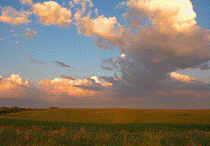North American Prairie Conference
Date of this Version
1989
Abstract
Snakes were caught in drift fence traps throughout the season of activity on a 32 ha sand prairie in Harvey County, Kansas, from 1966 through 1974. In these nine seasons, 128,281 trap station days yielded 6,412 captures of the six most common species of snakes: Pituophis melanoleucus sayi, Coluber constrictor jlaviventris, Thamnophis sirtalis parietalis. Thamnophis radix haydeni, Heterodon nasicus, and Heterodon platirhinos. Seasonal activity patterns, although variable from year to year, had a bimodal pattern with a period of low activity in late July or late August. Increases in snake activity resulted from increases in population size due to recruitment of new snakes or from increases in activity of individual snakes. Activity patterns were related to food abundance and reproductive activity.


Comments
Published in Prairie Pioneers: Ecology, History and Culture: Proceedings of the Eleventh North American Prairie Conference, August 7-11, 1988, Lincoln, Nebraska (Lincoln, NE 1989).